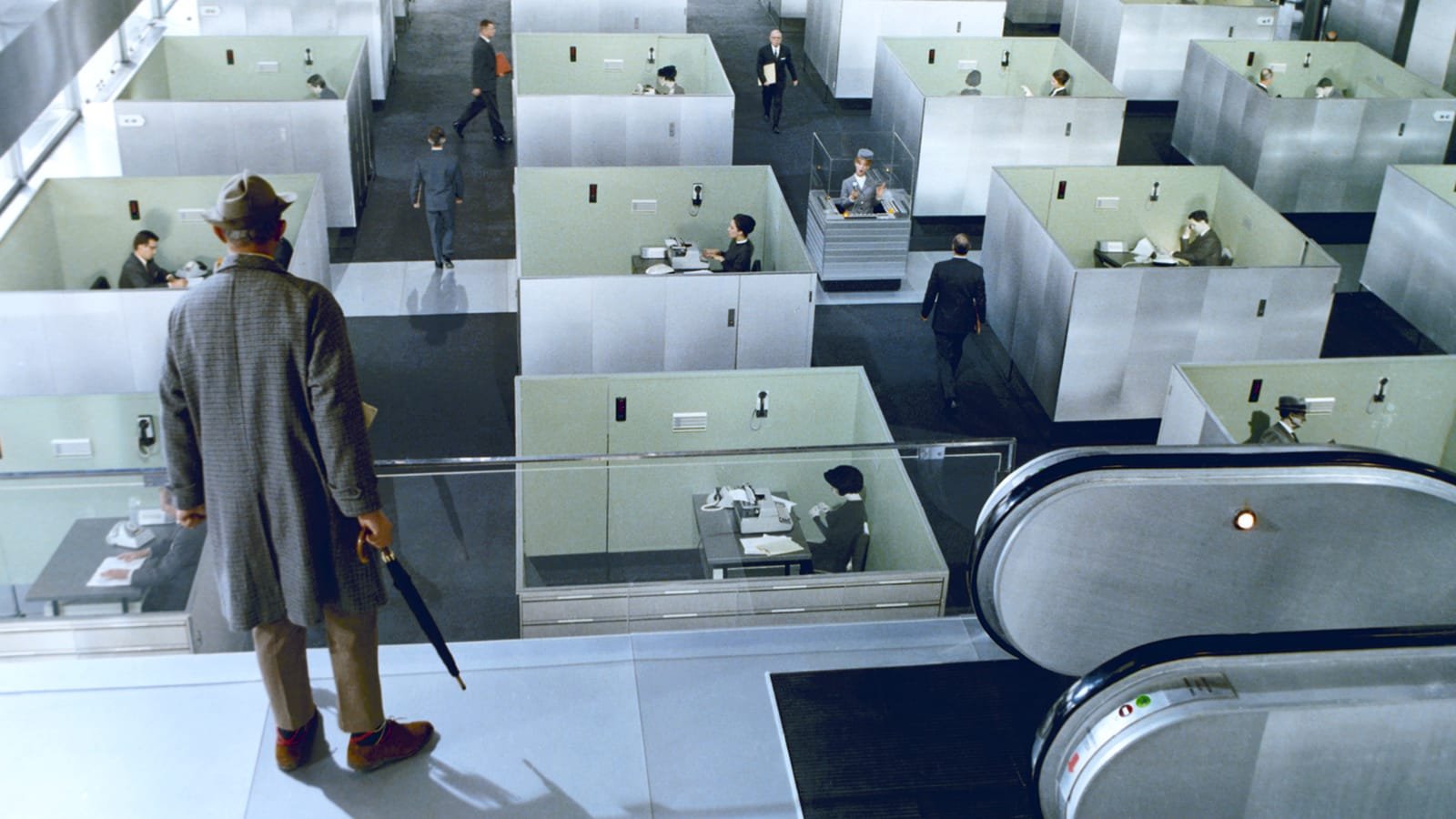Inspiration
Play time
25 August 2024
Jacques Tati’s 1967 masterpiece is two hours of the most beautiful cinema you will ever see. Each frame is cram-packed with light, colour, geometry, style and the most perfectly choreographed movement that will have you glued to the screen, trying not to miss a moment of it. It really is a feast for the senses and a long-term favourite of mine and a major inspiration for my street photography. If watching Playtime doesn’t have you grabbing your camera and heading out into the streets to look for stunning street photos, then nothing will.
Filmed on a huge and complex set, which resulted in it being the most expensive French film in history at the time of its production, Playtime centres around the director himself playing the bumbling character, Monsieur Hulot, as he experiences a day out in Paris. Dressed in his long overcoat, hat and ankle-length trousers, the umbrella carrying Hulot
drifts through the most hilarious situations within the sleek, modern, architectural wonder of a set.
Constructed on the outskirts of Paris, the set’s three principal areas comprise of an air-terminal, an office block and a restaurant. However,
the impression we get is of an endless world of glass corridors, escalators, traffic filled streets and apartment blocks.
In terms of the look and style of the film, there is a definite link between Playtime and some of the films and TV series that are produced today, such as the Apple TV series Severance, which I have written about here. The endless corridors, sterile looking workplace and limited colour palette in the series are recognisable and redolent of Tati’s creation. The mood is very different however, Severance is distictly dystopian while Playtime is one of pure farce with its world of weird invention and haplessness.
Beautifully choreographed, with characters moving around the scenes in almost balletic fashion, it’s like a very skilled piece of live theatre being played out on a gigantic stage. There is so much to keep your eyes on. Immaculately dressed couples in lockstep; swarms of tourists being shepherded through the busy streets; passengers being herded onto buses, there’s an amazing cast of extras all contributing to the unrelenting pace of the film.
The cinematography, courtesy of the celebrated French-Hungarian director of photography, Jean Badal, is a joy to behold. With a colour palette consisting of subdued greys, blues and greens the effect feels very modern even by today’s standards. The majority of scenes feature glass and steel, but the look is punctuated by notes of deep reds, purples and brighter greens. For example, the airport cleaner’s broom head and the inside of his dust collector are red, as are the paper flowers seen decorating the hair of the lady tourists who are escorted through the airport to the waiting coaches outside. Elsewhere, flashing red and green lights on an expansive looking control panel in an office reception, puncture the monotone feel with strong hits of colour.
The film is comprised largely of still shots, with the camera situated to enhance the impact of each composition. In this way, the scenes play-out to their full extent and leave the viewer to fully appreciate the many finer points of detail.
Many scenes look like classic street photos, carefully framed and composed and with that crucial sense of timing that captures the decisive moment. Each scene is a triumph of compositional technique and the camera frames to perfection. Every inch of the screen has been thought about with just the right amount of detail, never too much or too little. For the street photographer Playtime is inspiration itself. Reflections abound in the layers of glass and steel surfaces and a geometric display of lines, shapes and forms create a very modern and stylish environment, redolent of today’s cities and urban spaces.
As the film has no real continual dialogue, the attention to sound design brings with it another dimension. Sounds of elevators, doors, general chatter and even people’s feet on the pavement have been given special attention and play a significant role in the overall ambience and mood of the film.
Playtime definitely rewards repeat viewings as each time you watch, you notice something else in the set or become aware of another part of the unfolding storyline. It’s often a case of choosing what to focus on as multiple stories occur at the same time, which one do you choose to follow? Playtime is a film to abandon yourself to, as it flows and unfolds before you and it’s also two hours of the most sublime inspiration for the street photographer.
You may also like



